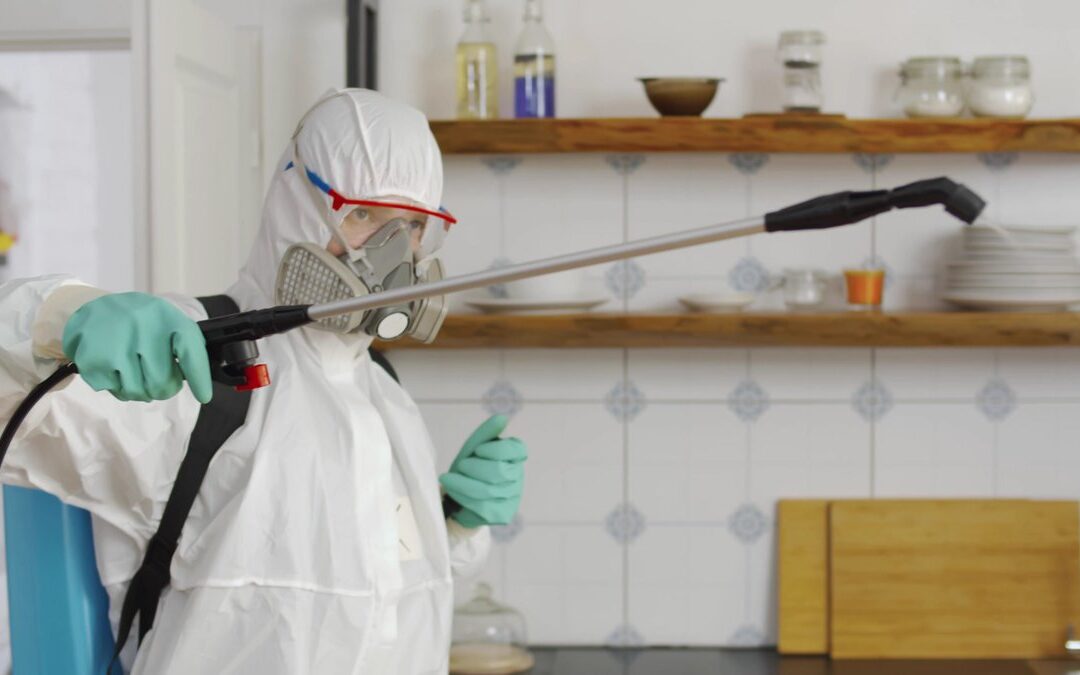
Rat infestations caused many great diseases in history. The Bubonic plague, also known as “The Black Death” killed 25 million people. This plague was a type of infection caused by Yersinia pestis (Y. pestis), which was a bacteria on the fleas rats carried. If a flea bit a person carrying this bacteria, that person would become infected.
According to the Centers for Disease Control and Prevention, rats have numerous diseases that could make us ill. There are many diseases humans could contract from rats directly and indirectly. Some of the diseases rats carry are:
Hantavirus
Hantaviruses are a family of viruses spread by rats through coming in contact with rodent feces, urine, nesting materials, and saliva. It is less likely someone will get infected by the disease through a bite than through other variations. The multiple symptoms of Hantavirus are Hemorrhagic Fever with Renal Syndrome and Hantavirus Pulmonary Syndrome.
Lassa Fever
Lassa fever is an animal-borne illness mainly spread by African rats. It has affected West Africa and infects nearly 100,000 to 300,000 per year. The symptoms of this illness range from mild like light fever, headache, and weakness, to severe, such as hemorrhaging, consistent vomiting, body aches and pains, facial swelling, and neurological problems.
Leptospirosis
This disease is a bacteria that can lead to kidney damage, liver failure, respiratory issues, meningitis, and even death, if not treated.
Lujo Hemorrhagic Fever
Lujo hemorrhagic fever is a symptom caused by the Lujo virus. People can become infected through the transmission of this disease through rat droppings and urine. Symptoms of the Lujo virus resemble those of Lassa fever.
Lymphocytic Choriomeningitis (LCM)
LCM is a rodent-borne virus that is commonly spread through house mice, or if contaminated, hampsters. Hampsters are not the original host but can become infected by house mice if exposed. The symptoms of this virus are fever, headache, lack of appetite, nausea, vomiting, muscle aches, and other pain and aches.
LCM is not a fatal disease but should be treated if contracted.
Monkeypox
Monkeypox or Mpox is contracted by skin-to-skin contact with someone who has been infected or through intimacy.
The main symptom of Mpox is an all-over-body rash that appears like blisters or pimples on the hands, feet, chest, and face. If untreated, the rash can spread. Other symptoms of monkeypox include fever, chills, muscle aches, sore throat, swollen lymph nodes, and exhaustion.
Rat-Bite Fever
Rat-bite fever is caused by two different bacteria: Streptobacillus moniliformis (streptobacillary RBF) and Spirillum minus (spirillary RBF). Streptobacillary RBF has been reported in the U.S. and spirillary RBF, also known as sodoku, is common in Asia.
People can become infected by drinking contaminated water that rats swam in, drank from, or somehow contaminated by coming in contact with a water supply. Symptoms of this illness are Haverhill fever, vomiting, rash, headache, and joint pain. If untreated, this disease can be fatal.
Salmonellosis
Salmonellosis is a bacteria that is most commonly associated with contaminated food, however, rats carry this disease as well. Symptoms of this illness are vomiting, diarrhea, stomach cramps or pain, and fever.
Tularemia
Tularemia most commonly affects animals, such as rats and rabbits, however, humans can become infected with this disease. Forms of this disease include Ulceroglandular, Glandular, Oculoglandular, Oropharyngeal, Pneumonic, and Tyhphoial. Symptoms of this bacterial disease include high fever, ulcers, and more. Tularemia can be treated with antibiotics.
There are other diseases and illnesses humans can contract from rats indirectly. These diseases and illnesses are Colorado tick fever, Lacrosse virus, Lyme disease, Flea-borne (Murine) Typhus, and plagues.
By protecting your property with rat control services, you’re protecting your health by eliminating the source of illness caused by the disease these rodents carry.
Signs of a Rat Infestation
There are many sure-tell signs that rats are present in your home. Look for sightings, listen for sounds, and if you smell foul or pungent smells, it could be a sign of a rat infestation.
Sightings
Gnaw marks, chew marks, or scratch marks on your furniture, floors, or other areas of your home. Nesting materials such as shredded paper or rat droppings near food items or containers, under layers of blankets, is a sure-tell sign of an infestation.
Noises
Squeaking, scratching, or scattering are common sounds that indicate a rodent infestation in your home.
Smells
Foul odors are a good indicator of an infestation. The smell of ammonia is commonly associated with rats. The smell typically comes from their urine.
Preventing a Rat Infestation
If your home is currently pest-free, there are ways you can minimize the possibility of rats infesting your home.
Entrances
The best way to prevent a rat infestation is by caulking or covering any holes or cracks that could potentially be pathways for rats to enter your home. Thoroughly investigate the perimeter around your house and check for any damages. If you see any damage to your drywall or cracks in your windows, fix them immediately.
Food Sources
By keeping the lids on your garbage cans and food containers closed tight, you can eliminate feeding potential pests. Another way to eliminate rodents’ food sources is to keep your pet food hidden and sealed tight.
What To Do When Your Home Has a Rodent Infestation

Once rats infest a home, it’s difficult to get rid of them without the help of a professional. The best solution to removing rats, mice, or other rodents from your home is by opting for rat extermination and calling a rat exterminator.
It’s important to call for professional rat removal at first sight of them because rodent populations can rapidly increase. Allergens rodents carry many diseases and rodent bites may infect you and your family, causing illness and possibly death, if untreated.
A professional rat exterminator will conduct a rat inspection, offer a quote for rat exterminator cost, and then provide rat removal.
Rat control services focus on removing the problem within your home, but can also help to prevent future infestations. While waiting for an exterminator to visit your home, conduct a rodent inspection and do what you can to eliminate as much of the problem as you can.
Rat Treatments
There are several different rodent removal methods you can use to try to rid the problem yourself while you wait for a professional to properly apply a rat treatment.
Setting Up Bait Stations
Set up bait stations near holes or where you suspect rodents. House mice usually hide in basements, in the walls of your home, under piles of clothing, or out of plain sight. Roof rats If you suspect multiple rats, set up bait stations all around your home, including the exterior. Setting up bait stations is one of the best methods for pest control.
Sanitation
Disinfesting your home can help to eliminate any bacteria or viruses that can cause illness carried by rats. Great sources of disinfectant are bleach, sanitizer, and EPA-registered disinfectant.
Eliminate Sources of Food
Rats are omnivores and typically eat meat, fruit, and vegetables, however, they’ll survive on food you have in your home, such as; dry cereal, nuts, and fruit. Because rats can crawl into your cupboards and gnaw through cardboard boxes, keep your cereal and other food items in plastic containers.
Remove Nests
If you see nesting material wait for professional rat extermination to remove the issue, however, you can eliminate the pest’s means for making a home by putting away paper and other materials they can make nests out of.
Rats, mice, and rodents alike like warm, dark places. Typically, they’ll enter the home through a hole in the wall and enter from the outside. Most times, rodents will burry If you caulk the holes, be sure to consult with a professional.
If you experience another infestation, such as termites, bats, flying squirrels, ants, or other pests, the best solution is to consider pest control and find the right professional for the job. Pest control experts can remove the problem and initiate pest control.






